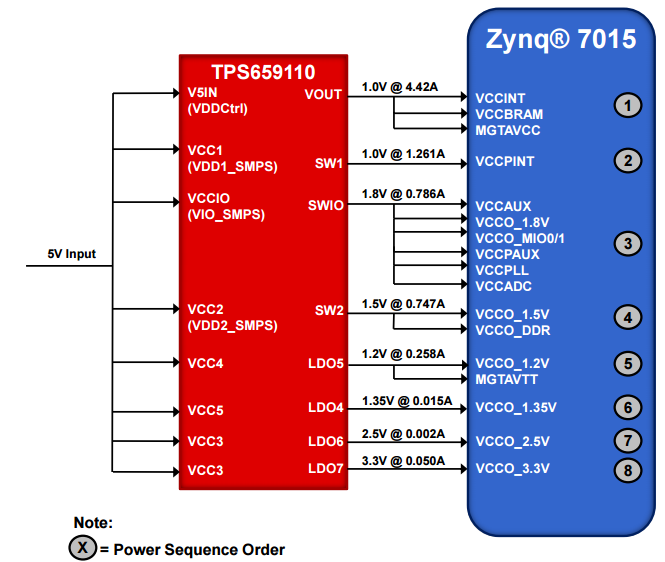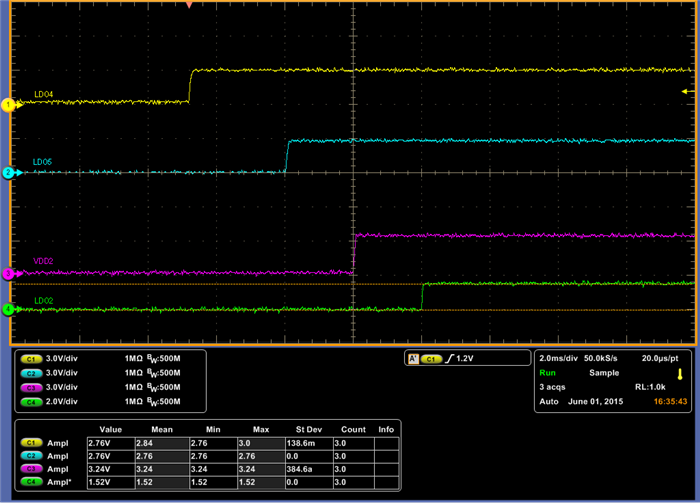Fast Forward Your FPGA Power Design with TI Designs
Shawn Razek
Wouldn’t it be much easier if processors and field programmable gate arrays FPGAs all operated from the same voltage and didn’t require special features like sequencing and control? Unfortunately, most processors and FPGA require different supply voltages, startup/shutdown sequences and different types of control.
Luckily, power-management ICs integrated circuits (PMICs) can power and control today’s advanced processors, FPGAs and systems, making overall system design much simpler.
Now you might be wondering which PMIC can power your system on chip (SoC), and how to get started. Selecting the right power solution for your SoC and system is one of the most common challenges for system designers. So TI released several new tools that enable easier selection, evaluation and design using our PMICs.
Among those tools are TI Designs reference designs, which help engineers start, verify and accelerate designs. Multiple TI Designs have been released showcasing many different SoCs that TI PMICs can powered by– here’s a current list:
- TIDA-00478 using the TPS65218 to power the Xilinx Zynq 7010.
- TIDA-00551 using the TPS65911 to power the Xilinx Zynq 7015.
- TIDA-00604 using the TPS65023 to power the Altera Cyclone III.
- TIDA-00605 using the TPS65023 to power the Altera Cyclone IV.
- TIDA-00607 using the TPS65218 to power the Altera MAX 10.
- TIDA-00621 using the TPS65911.
Figure 1 is a block diagram of the TPS65911 powering an ARM Processor. As with all TI PMICs, the TPS65911 is very flexible and can be used across several devices. See Figure 2, which shows the TPS65911 powering the Xilinx Zynq 7015 FPGA.
 Figure 1 Block Diagram of the TPS65911
Figure 1 Block Diagram of the TPS65911
 Figure 2 Block Diagram of the TPS65911 Powering the Xilinx Zynq
7015
Figure 2 Block Diagram of the TPS65911 Powering the Xilinx Zynq
7015These designs come complete with a schematic, block diagram, printed circuit board (PCB) files and test results. The tests enable engineers to evaluate the performance of the PMIC for the specific SoC they’re trying to target and provide example design files that can be leveraged in their own designs. Test results include startup sequencing, load transients, efficiency tests and more like shown in Figure 3.
 Figure 3 Example Startup Timing for
TPS65911
Figure 3 Example Startup Timing for
TPS65911To find out more about TI’s PMICs, TI Designs, support collateral, technical documentation and more, check out www.ti.com/PMIC. Tell us how you plan to leverage TI Designs to validate and accelerate your next power design using TI PMICs.
IMPORTANT NOTICE AND DISCLAIMER
TI PROVIDES TECHNICAL AND RELIABILITY DATA (INCLUDING DATASHEETS), DESIGN RESOURCES (INCLUDING REFERENCE DESIGNS), APPLICATION OR OTHER DESIGN ADVICE, WEB TOOLS, SAFETY INFORMATION, AND OTHER RESOURCES “AS IS” AND WITH ALL FAULTS, AND DISCLAIMS ALL WARRANTIES, EXPRESS AND IMPLIED, INCLUDING WITHOUT LIMITATION ANY IMPLIED WARRANTIES OF MERCHANTABILITY, FITNESS FOR A PARTICULAR PURPOSE OR NON-INFRINGEMENT OF THIRD PARTY INTELLECTUAL PROPERTY RIGHTS.
These resources are intended for skilled developers designing with TI products. You are solely responsible for (1) selecting the appropriate TI products for your application, (2) designing, validating and testing your application, and (3) ensuring your application meets applicable standards, and any other safety, security, or other requirements. These resources are subject to change without notice. TI grants you permission to use these resources only for development of an application that uses the TI products described in the resource. Other reproduction and display of these resources is prohibited. No license is granted to any other TI intellectual property right or to any third party intellectual property right. TI disclaims responsibility for, and you will fully indemnify TI and its representatives against, any claims, damages, costs, losses, and liabilities arising out of your use of these resources.
TI’s products are provided subject to TI’s Terms of Sale (www.ti.com/legal/termsofsale.html) or other applicable terms available either on ti.com or provided in conjunction with such TI products. TI’s provision of these resources does not expand or otherwise alter TI’s applicable warranties or warranty disclaimers for TI products.
Mailing Address: Texas Instruments, Post Office Box 655303, Dallas, Texas 75265
Copyright © 2023, Texas Instruments Incorporated